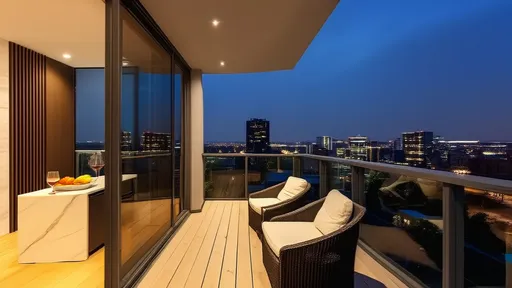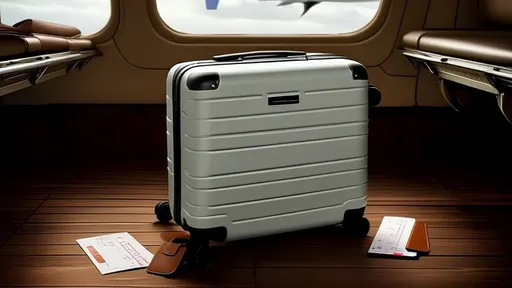The cruise industry has long thrived on the allure of upgrades and last-minute deals. Among these, balcony cabin upgrades at discounted rates remain one of the most sought-after opportunities for savvy travelers. Whether you're a first-time cruiser or a seasoned voyager, the chance to secure a spacious balcony stateroom at a fraction of the original price is an irresistible proposition.
Lines like Royal Caribbean, Norwegian, and Carnival frequently offer these promotions as departure dates approach. The logic is simple: unsold balcony cabins represent lost revenue for cruise operators. Rather than sail with empty rooms, they slash prices dramatically—sometimes by 50% or more—to fill remaining inventory. This creates a golden window for passengers willing to gamble on waiting.
How do these last-minute balcony deals actually work? Typically, about 30-45 days before sailing, cruise revenue managers assess occupancy rates. If balcony categories are undersold, they'll first offer paid upgrades to existing passengers (often via email auctions or direct offers). Whatever remains after this phase then gets released as deeply discounted new bookings, usually through flash sales or partner travel agencies.
The sweet spot for scoring these deals falls between 2-3 weeks before departure. During this period, cruise lines become increasingly motivated to sell remaining inventory. However, there's an art to navigating these waters. While the discounts are real, availability follows no predictable pattern. A ship might have 20 balcony cabins available one day and just 3 the next as other deal-seekers pounce.
Not all balcony cabins are equal in these sales. The best discounts often apply to "obstructed view" or partially obstructed balcony categories, where structural elements slightly compromise the vista. True bargain hunters learn to research specific cabin numbers on cruise forums to understand exactly what "obstructed" means for each ship—sometimes it's merely a lifeboat visible when looking down, with otherwise unimpeded horizons.
Geography plays a surprising role in these deals. Certain departure ports consistently offer better last-minute balcony discounts than others. Florida ports, for instance, tend to have more inventory due to higher ship concentrations, making deals more plentiful. Conversely, European or Alaskan sailings might see fewer discounts due to tighter capacity. The time of year matters enormously too—hurricane season in the Caribbean or shoulder seasons in the Mediterranean often yield the steepest price drops.
Savvy travelers employ specific strategies to capitalize on these opportunities. Many maintain flexible vacation schedules, ready to book when prices plummet. Others set price alerts on cruise tracking websites or develop relationships with travel agents who get first access to unpublished deals. There's even a subculture of cruisers who book guaranteed interior cabins at low rates, then systematically monitor for affordable balcony upgrades as sailing dates near.
The financial calculus of last-minute balcony upgrades reveals why they're so appealing. On a 7-night Caribbean cruise, for example, a balcony cabin might initially cost $1,800 per person. Two weeks before sailing, that same category could drop to $999—a sum that often includes port fees, taxes, and sometimes even beverage packages or onboard credit. When split between two travelers, the per-night cost difference versus an oceanview cabin can become negligible for a vastly superior experience.
Technology has transformed how travelers access these deals. Where once you needed to constantly call cruise lines or visit travel agencies, now automated tools do the heavy lifting. Several websites track price histories across multiple cruise lines, sending alerts when specific cabin categories hit predetermined price points. Some even predict likelihood of future discounts based on historical data and current booking patterns.
There are, of course, trade-offs to this last-minute approach. Airfare to departure ports often becomes more expensive when booked late, potentially offsetting cruise savings. Those requiring specific cabin locations (mid-ship for stability, for instance) or traveling in larger groups may find limited suitable options. And the most desirable itineraries or newest ships rarely see significant balcony discounts, as they tend to sell well in advance.
For solo travelers, last-minute balcony deals present both challenges and opportunities. While single supplements often disappear during these sales (effectively offering solo pricing at or near double-occupancy rates), true single balcony cabins remain scarce. Most deals still require paying for two passengers, though some lines now offer "solo balcony" categories on newer ships specifically designed to capture this market during late sales periods.
The psychological aspect of these upgrades shouldn't be underestimated. There's undeniable thrill in securing what feels like a "secret" deal—the maritime equivalent of finding buried treasure. Cruise lines enhance this perception through carefully crafted marketing, positioning these offers as exclusive opportunities rather than inventory management necessities. This creates a win-win where passengers feel triumphant and ships sail fuller.
Looking ahead, industry analysts predict last-minute balcony deals will evolve rather than disappear. As cruise lines develop more sophisticated revenue management systems, we'll likely see more targeted, personalized upgrade offers. Some lines are experimenting with blind-bid upgrade auctions, while others use AI to predict exactly which passengers might pay what amount for a balcony cabin. The human element of deal-hunting may diminish, but the fundamental principle—that unsold premium cabins hold more value as discounted upgrades than empty rooms—will endure.
For those who've experienced the magic of watching a Caribbean sunrise from a private balcony secured at a fraction of brochure prices, no explanation is needed. For everyone else, the world of last-minute cruise upgrades remains one of travel's best-kept secrets—provided you know when, where, and how to look.

By /Aug 4, 2025

By /Aug 4, 2025

By /Aug 4, 2025

By /Aug 4, 2025

By /Aug 4, 2025

By /Aug 4, 2025

By /Aug 4, 2025

By /Aug 4, 2025

By /Aug 4, 2025

By /Aug 4, 2025

By /Aug 4, 2025

By /Aug 4, 2025

By /Aug 4, 2025

By /Aug 4, 2025

By /Aug 4, 2025

By /Aug 4, 2025

By /Aug 4, 2025

By /Aug 4, 2025

By /Aug 4, 2025

By /Aug 4, 2025